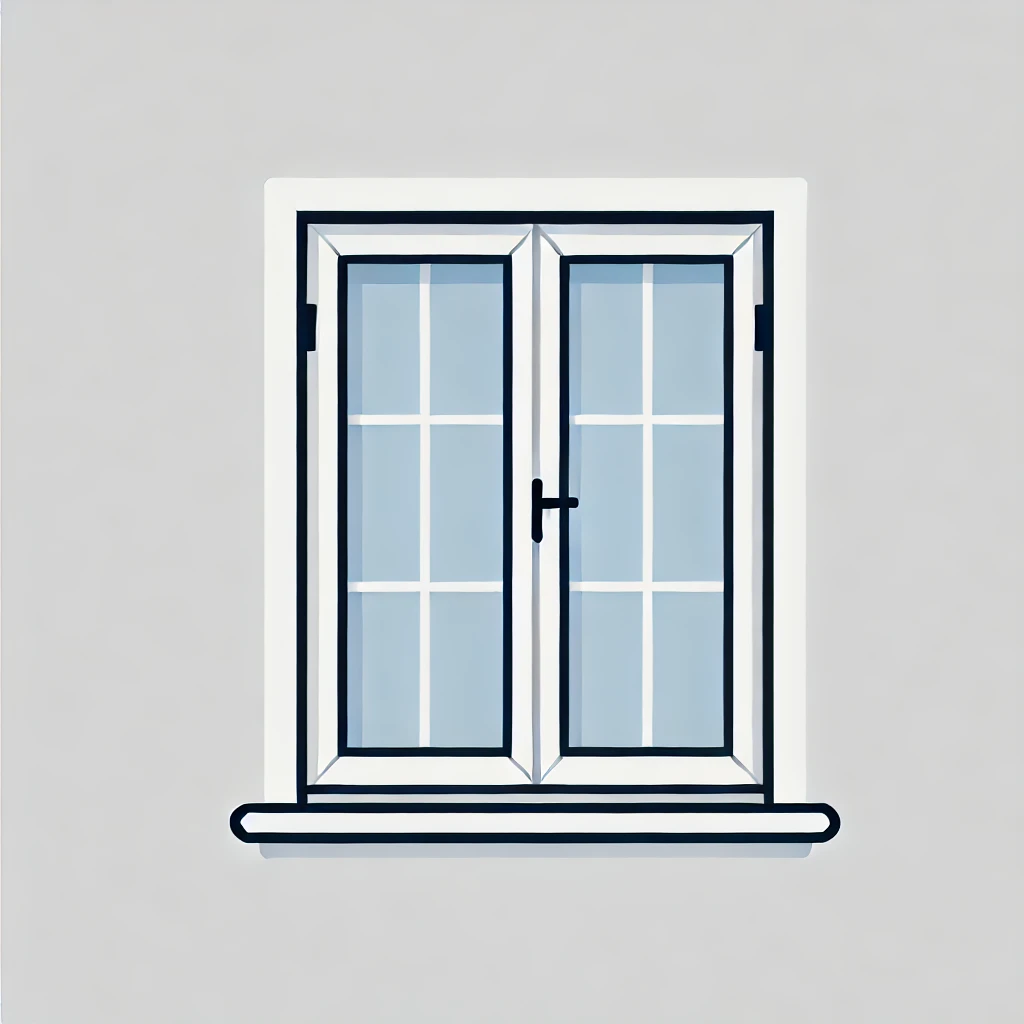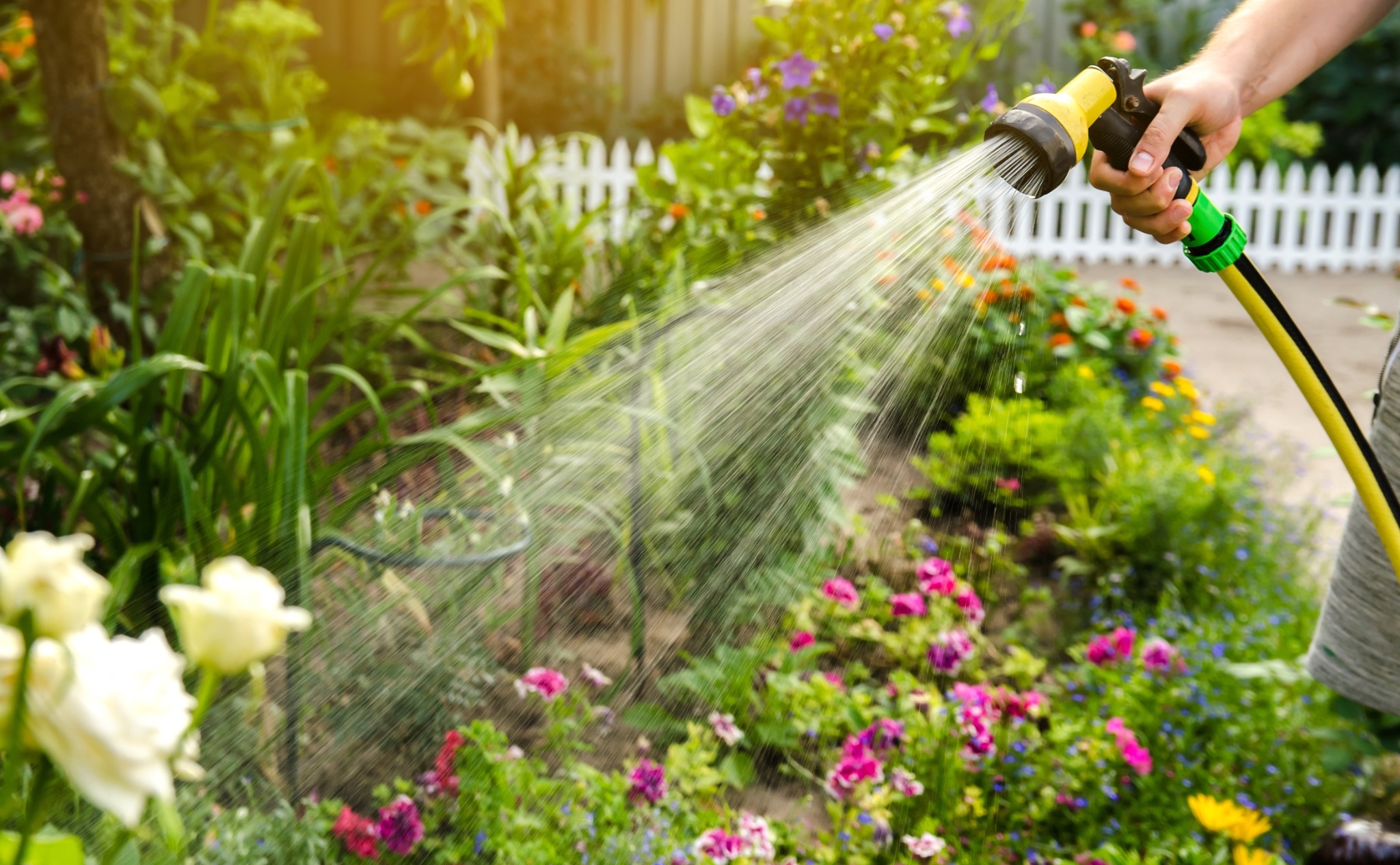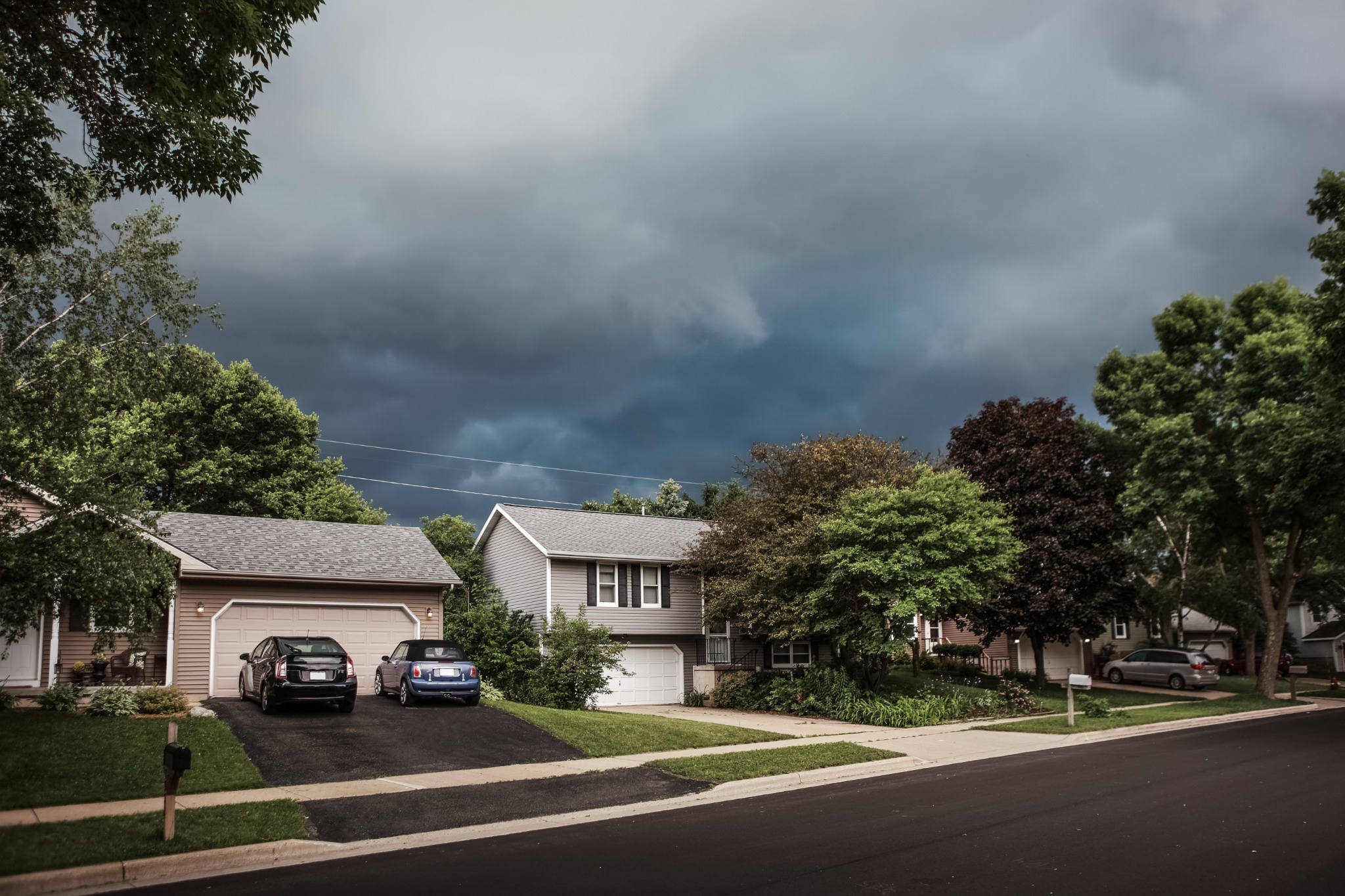Author: Elliot Grayson
Table of Contents
Rainy Day Fun: Spring Activities for Families
When spring showers keep you indoors, it doesn’t mean the fun has to stop. Rainy days are a perfect excuse to slow down, get creative, and make lasting memories with your family—all without spending a fortune.
Look into these fun, low-cost ideas to turn a gloomy spring day into one filled with laughter and connection.
Get Creative with DIY Crafts
Crafting is the ultimate rainy day go-to, and it doesn’t have to cost much if you use items you already have at home.
- Nature Collages: Use leaves, flowers, and twigs collected from previous outdoor adventures to create beautiful art.
- DIY Bird Feeders: Smear peanut butter on a toilet paper roll, roll it in birdseed, and hang it outside for a fun and educational craft.
- Rain Sticks: Make homemade rain sticks using paper towel rolls, rice, and foil for a musical project that fits the weather theme.
- Painted Flower Pots: Grab old flower pots and paint them with bright spring designs, ready to use once the sun comes out.
Crafting not only keeps little hands busy but also brightens your home with personal touches of spring.
Build Cozy Forts and Indoor Hideaways
There’s something magical about building a cozy fort on a rainy day.
- Blanket Fort Bonanza: Use chairs, pillows, and blankets to create a mega fort where kids can read, snack, and pretend.
- Indoor Camping: Set up sleeping bags, tell ghost stories, and make microwave s’mores for a full camping experience without the bugs.
Add fairy lights or flashlights for an extra cozy atmosphere that kids will love.
Turn the Kitchen into a Fun Zone
Rainy days are perfect for kitchen adventures that are fun, delicious, and educational.
- DIY Pizza Party: Let everyone create their own mini pizza with different toppings.
- Cookie Decorating: Bake simple sugar cookies and spend the afternoon decorating with icing and sprinkles.
- Fruit Kabob Creations: Turn healthy snacks into a fun activity by letting kids build colorful fruit kabobs.
Cooking together teaches valuable skills and gives everyone a tasty reward at the end.
Bring on the Games and Challenges
Indoor games can turn a dreary day into a competitive, laughter-filled one.
- Board Game Tournaments: Pick a few family favorites and set up a mini tournament with prizes for winners.
- Puzzles: Tackle a big, colorful puzzle as a group project.
- Indoor Scavenger Hunt: Hide small items around the house and create clues or a treasure map for the kids to follow.
These activities bring the family together and create friendly competition without costing a dime.
Host a Movie Marathon
A rainy day is the perfect excuse to binge-watch your family’s favorite movies or shows.
- Pick a Theme: Choose a genre like adventure, superheroes, or animals.
- Make It Special: Create “tickets,” set up a snack bar, and make it feel like a real theater experience.
- Cozy Setup: Pile up blankets and pillows for a comfy, all-day movie fest.
This simple setup can turn an ordinary afternoon into a memorable event.
Get Moving with Indoor Workouts
Just because you’re stuck inside doesn’t mean you have to sit still.
- Dance Party: Crank up the tunes and dance it out in the living room.
- Yoga for Kids: Try beginner-friendly yoga videos to help everyone stretch and unwind.
- Obstacle Course: Use pillows, tape lines on the floor, and other household items to create a mini indoor obstacle course.
Keeping active helps burn off energy and lifts everyone’s mood.
Explore Virtual Adventures
The internet is full of virtual experiences perfect for a rainy day.
- Virtual Museum Tours: Explore famous museums like The Louvre or The Smithsonian online.
- Animal Cams: Watch live streams from zoos and aquariums around the world.
- Art or Science Classes: Check YouTube for free art tutorials or simple science experiments.
Learning something new as a family adds a sense of adventure even while staying cozy at home.
Final Thoughts
Rainy spring days don’t have to be boring or expensive. With a little creativity and some simple supplies, you can turn even the gloomiest weather into a day full of laughter, learning, and family connection.
Dive into these easy and affordable rainy day activities and make the most of your cozy springtime indoors.
DIY
Home Services
Weather & Maintenance
Table of Contents
Spring Break at Home: Fun and Cheap Activities for Families
You don’t have to go on a fancy vacation to enjoy spring break with the family. Staying home can be just as fun—and way more affordable—with a little creativity and planning. Whether you’re trying to keep the kids busy, create memories, or just enjoy some quality time together, there are plenty of budget-friendly ways to make spring break special. From DIY crafts to backyard games and local outings, here are easy and fun ideas to help you enjoy a spring break to remember—without breaking the bank.
Get Crafty with DIY Projects
Crafts are a great way to keep kids entertained while sparking their creativity. You don’t need fancy supplies—just a few basics and some imagination.
Nature-Inspired Art
Take a walk and collect leaves, twigs, or flowers, then use them for nature prints or collages. Press flowers in books and use them for homemade bookmarks or greeting cards.
Homemade Slime or Play Dough
Use simple ingredients like glue, baking soda, or flour to make fun, squishy creations. Let kids mix colors and add glitter or small toys for extra fun.
Recycled Art Projects
Turn old cardboard boxes, paper towel rolls, and bottle caps into robots, animals, or mini cities. Add markers, stickers, and tape for decorating.
Sidewalk Chalk Murals
Head outside and let the kids turn the driveway or sidewalk into a colorful masterpiece. Give them themes like outer space, under the sea, or a favorite movie scene.
Backyard Adventures
Your backyard can be the ultimate spring break destination. With a few simple activities, it becomes a space for adventure, learning, and play.
Backyard Camping
Set up a tent, grab some sleeping bags, and have a backyard campout. Roast marshmallows over a fire pit (or microwave s’mores), tell stories, and stargaze.
Obstacle Course Challenge
Use household items like hula hoops, cones, pool noodles, or jump ropes to create an obstacle course. Time each other or compete in teams for added excitement.
Water Play
If it’s warm enough, bring out the hose, kiddie pool, or sprinklers for a mini splash day. Water balloon tosses or sponge races can add to the fun.
Nature Scavenger Hunt
Create a list of outdoor items (like a red leaf, a bird feather, or a smooth rock) and let the kids hunt around the yard or neighborhood.
Indoor Fun for Rainy Days
Spring weather can be unpredictable, but indoor fun is always possible. Keep kids busy and happy with these cheap and easy options.
Movie Marathon Day
Pick a theme (Disney, superheroes, animal adventures) and line up a few movies. Make popcorn, create homemade tickets, and turn your living room into a theater.
Kitchen Fun
Get the kids involved in baking cookies, decorating cupcakes, or making their own mini pizzas. Let them help with measuring and mixing for a hands-on experience.
DIY Science Experiments
Try simple experiments like a baking soda and vinegar volcano, rainbow milk, or homemade rock candy. Most only require items already in your kitchen.
Indoor Fort Building
Use pillows, blankets, and furniture to create the ultimate indoor hideout. Add books, flashlights, and snacks for hours of cozy fun.
Explore Your Community on a Budget
You don’t need to leave town to discover something new. Local adventures are a great way to enjoy spring break and stay within your budget.
Visit Local Parks and Trails
Pack a picnic and head to a nearby park for a day of hiking, exploring, and outdoor games. Bring a soccer ball, frisbee, or jump rope to keep kids active.
Library Programs
Check your local library for free events like story time, craft workshops, or scavenger hunts. Many also have take-home activity kits for kids.
Low-Cost Attractions
Look for free or low-cost entry to local museums, zoos, or nature centers. Some places offer discounted family days or free admission for kids.
DIY Photo Tour
Give each child a disposable camera or let them use a phone to take pictures around your neighborhood or town. Create a scrapbook or slideshow at the end of the week.
Make Memories with Theme Days
Turn each day of spring break into something special by creating themed activities.
Pirate Day
Dress up as pirates, hunt for hidden treasure in the backyard, and make eye patches or pirate hats.
Animal Day
Visit a petting zoo, watch an animal documentary, and do animal crafts or face painting.
Science Day
Do experiments, build simple machines with LEGO bricks, and watch science-themed videos online.
Sports Day
Play backyard games like soccer, tag, or cornhole. Create DIY medals and hold mini award ceremonies.
Final Insights
You don’t need a big budget or a plane ticket to enjoy an unforgettable spring break with your family. With a mix of indoor fun, outdoor adventures, creative crafts, and local outings, your home can become the perfect staycation destination. It’s all about spending time together, trying new things, and making the most of what you already have. So gather your supplies, plan your week, and get ready to enjoy a spring break full of laughter, learning, and lasting memories—right from home.
DIY
Home Services
Weather & Maintenance
Table of Contents
Affordable Window Replacement Options for Homeowners
When it comes to home improvements that pay off in both comfort and value, replacing old windows ranks high on the list. Not only do new windows enhance curb appeal, but they also improve energy efficiency, increase natural light, and reduce unwanted noise. Whether you’re dealing with drafty panes, broken latches, or just outdated styles, choosing the right replacement windows can feel overwhelming with so many styles, materials, and features on the market.
🔥 Buy One, Get One 40% Off* + $200 Off Your Entire Purchase*
- Custom-crafted Windows & Professional Installation
- Hassle-free Process From Start to Finish
- In-home, No-obligation Consultation
- Renewal by Andersen has replaced more than 8.5 million windows in over 1 million homes
50% Off All Windows + 0% Interest for 24 Months
-
2 Million+ Windows Installed in 200,000 Homes
- Block Up to 99.9% of UV Light
- 1-Day Professional Install & Lifetime Warranty
- 5% Discount for Military & Seniors
- Minimum of 3 windows required
Connects you with nearby Window Installation experts
- Get access to listed contractors using your zip code
- Directly contact the contractor of your choice or schedule a service
- BBB Accredited with an A+ Rating
✅ Schedule a FREE Consultation Online by 8/29*
- Financing Available^
- Local, Independent Installers**
- Double Lifetime Window Warranty***
- Wide Selection of Brands: Pella, JELD-WEN, ReliaBilt & United
But don’t worry—understanding the key options available makes the decision much easier. Let’s walk through the most popular types of residential windows, the materials used to make them, and what to consider before making an investment.
Why Window Replacement is Worth the Investment
Old windows aren’t just an eyesore—they’re often responsible for inflated energy bills and uncomfortable indoor temperatures. Many older homes have single-pane windows that lack insulation, leading to drafts in winter and heat buildup in summer. Replacing them with modern alternatives can significantly cut down on energy use, reduce your carbon footprint, and provide a much more comfortable living environment.
Plus, new windows can increase the value of your home. Real estate agents often highlight upgraded windows as a major selling point. Even if you’re not selling anytime soon, it’s an investment you’ll enjoy every single day.
Exploring the Different Window Types for Homes
Double-Hung Windows: The Classic Choice

Double-hung windows are a timeless favorite and for good reason. These windows have two sashes that slide vertically within the frame. Both the upper and lower panels can be opened, allowing for flexible airflow. Many newer double-hung models are designed to tilt inward, making cleaning a breeze—especially for second-story windows.
This type of window is versatile and works well with a variety of architectural styles, from traditional colonial homes to more contemporary designs. While they are slightly less airtight than other window styles, their accessibility, affordability, and familiarity make them one of the top picks for homeowners.
Casement Windows: Modern and Efficient

Casement windows open outward using a crank mechanism, swinging either to the left or right depending on installation. They create an airtight seal when closed, which boosts their energy efficiency. Their design allows for maximum ventilation, as the entire window opening is unobstructed when the sash is open.
Casement windows pair well with modern homes due to their clean lines and sleek appearance. They’re especially useful in hard-to-reach places, such as over the kitchen sink, because the crank operation doesn’t require much strength or leverage. However, because they open outward, they may not be suitable for areas with tight landscaping or walkways close to the house.
Sliding Windows: Wide, Simple, and Affordable

Sliding windows operate horizontally along a track and are excellent for wide openings where vertical space might be limited. They offer a minimalist look and are particularly common in mid-century and contemporary home designs.
One benefit of sliding windows is their simplicity. Fewer moving parts mean fewer maintenance concerns over time. However, because only one side typically opens, airflow is somewhat limited compared to double-hung or casement windows. And since the tracks can collect dirt and debris, occasional cleaning is necessary to keep them operating smoothly.
Awning Windows: Compact and Weather-Resistant

Awning windows are hinged at the top and open outward from the bottom, forming an awning-like shape when opened. This design allows them to stay open during light rain, which makes them ideal for wet climates or humid areas like bathrooms and basements.
They also work well in combination with larger fixed windows, adding ventilation without sacrificing views. While their compact shape means they don’t let in as much air as larger styles, their security and water-resistance make them a smart choice for specific applications.
Picture Windows: Views First, Ventilation Second

If your goal is to flood your home with natural light or frame a beautiful outdoor view, picture windows are the way to go. These large, fixed-pane windows don’t open, which means they offer excellent insulation and minimal maintenance.
However, their lack of ventilation is something to consider. Homeowners often pair picture windows with other operable windows like casements or awnings to get the best of both worlds—light and airflow. These are commonly used in living rooms or stairwells where views and light matter more than air circulation.
Bay and Bow Windows: Big Style and Even Bigger Impact

For a dramatic upgrade, bay and bow windows can transform the look and feel of a room. Bay windows typically consist of three panels angled outward—one large picture window in the center and two smaller operable windows on the sides. Bow windows, on the other hand, have four or more curved panels for a gentler arc.
These windows extend beyond the exterior wall, creating additional space inside the home that can be used for a reading nook, seating, or decorative shelving. They offer panoramic views and tons of natural light. That said, they’re also some of the most expensive and complicated windows to install, so they’re best suited for major renovations or long-term investments.
Choosing the Right Frame Material
Picking a window style is just the beginning—you’ll also need to decide on the frame material. Each material has pros and cons when it comes to insulation, durability, appearance, and cost.
Vinyl is one of the most affordable options, and it performs well in terms of energy efficiency. It won’t rot or corrode, and maintenance is minimal. However, it can’t be painted, and prolonged exposure to high heat may cause warping.
Wood is the traditional gold standard for window frames, offering natural insulation and unmatched visual appeal. But it comes with a higher price tag and demands regular maintenance to prevent rot and insect damage.
Fiberglass frames are gaining popularity thanks to their strength and resistance to temperature changes. They can mimic the look of wood while requiring far less upkeep. They tend to cost more upfront but offer excellent long-term value.
Aluminum frames are lightweight and ideal for modern architecture. They’re less prone to warping than wood, but they conduct heat and cold more easily, making them less energy efficient unless paired with a thermal break.
Composite materials—made from a mix of wood fibers and plastic resins—offer a nice balance between durability and insulation. They resist moisture, won’t warp, and can be finished in a variety of colors and textures.
Energy Efficiency: What to Look For
Energy efficiency is one of the top reasons homeowners decide to replace their windows. To maximize your savings and comfort, pay attention to features like double or triple glazing, gas fills between panes (usually argon or krypton), and Low-E (low emissivity) coatings that reflect heat without blocking light.
You’ll also want to check for the ENERGY STAR certification, which guarantees the window meets or exceeds the efficiency standards for your region. Efficient windows can reduce energy bills by up to 15%, especially in homes with outdated single-pane windows.
Understanding the Costs
Window replacement costs can vary widely depending on the type, material, and size of the windows you choose. Here’s a helpful comparison:
| Window Type | Average Cost (Installed) |
|---|---|
| Double-Hung | $300 – $850 |
| Casement | $350 – $900 |
| Sliding | $250 – $800 |
| Awning | $400 – $1,000 |
| Picture | $250 – $1,200 |
| Bay/Bow | $1,200 – $4,500+ |
In addition to the base price, consider installation fees, which can add significantly to the total—especially for larger or more complex designs like bay windows. Replacing all the windows in an average-sized home could run anywhere from $8,000 to $20,000 depending on your choices.
Picking the Best Fit for Your Home
There’s no one-size-fits-all answer when it comes to window replacement. The right windows for your home depend on your climate, budget, style preferences, and long-term goals. If you’re planning to stay in your home for years to come, higher-end materials and triple-pane glass may be worth the extra investment. If you’re renovating a rental property or planning to sell soon, energy-efficient vinyl windows offer solid performance at a lower price.
Think about where you need ventilation, what kind of maintenance you’re willing to do, and whether you want to make a bold design statement or keep things classic. A little planning now goes a long way toward making sure your window upgrade delivers both function and beauty for years to come.
DIY
Home Services
Weather & Maintenance
Table of Contents
The Best Homeowners Insurance Providers: Comprehensive Comparison Guide
Finding the right homeowners insurance can feel like trying to pick the perfect avocado—everything looks good on the outside, but you’re not sure what’s inside until you really dig in. With so many insurance companies offering similar-looking policies, how do you choose the best one?
Save an Average of $989/year with Kin's Lower Rates
- Coverage for primary, vacation, and rental homes
- Add-ons for floods, wildfires, storms, and more
- Get a personalized quote online in minutes
🔍 Get Fast Home Insurance Quotes from Top-Rated Providers
- Instantly compare personalized rates from trusted insurers
- Save more by bundling home and auto coverage
- Make informed choices with expert-backed insights
- Trusted by over 50 million users nationwide
Save 10%+ When you Bundle Home & Auto
- Add flood & earthquake coverage easily
- Add identity theft & valuables coverage
- Save more when claim-free or paying in full
This guide breaks down the top home insurance providers, compares their features, and walks you through how to figure out what kind of plan you actually need. Whether you’re a first-time homeowner or looking to switch carriers, this guide has you covered.
What Does Homeowners Insurance Cover?
Let’s start with the basics. A standard homeowners insurance policy typically includes:
- Dwelling coverage – pays for damage to your home’s structure
- Other structures – covers things like garages, fences, or sheds
- Personal property – replaces belongings like furniture, clothes, or electronics
- Loss of use – helps with living expenses if you’re displaced
- Liability protection – covers injuries or damage to other people/property
- Medical payments – pays for minor injuries on your property, regardless of fault
What’s not usually covered: flood damage, earthquakes, regular wear and tear, pest damage, and some types of mold. For these, you’ll need add-ons or separate policies.
Top Home Insurance Companies Compared
Below is a comparison of some of the top-rated homeowners insurance providers in the U.S., based on customer satisfaction, financial strength, pricing flexibility, and coverage options.
| Provider | Best For | Standout Features | Average Premium* |
|---|---|---|---|
| Amica Mutual | Customer satisfaction | Dividend policies, extensive add-on options, high service ratings | $1,200–$1,600 |
| State Farm | Local support and agents | Large national network, customizable coverage, top financial strength | $1,300–$1,800 |
| Allstate | Discount variety | Claim RateGuard, Deductible Rewards, wide range of digital tools | $1,200–$1,700 |
| USAA | Military families | Excellent customer service, competitive pricing, broad coverage | $1,000–$1,400 |
| Lemonade | Tech-savvy homeowners | AI-powered claims process, easy-to-use app, giveback program | $800–$1,200 |
| Nationwide | Broad standard coverage | Better-than-average base policy, Brand New Belongings add-on | $1,100–$1,600 |
| Chubb | High-value homes | Guaranteed replacement cost, extensive global coverage for high-net-worth clients | $2,000+ |
*Premiums vary by location, home value, deductible, and other risk factors.
Deep Dive into Each Provider
Amica Mutual Insurance
Amica scores consistently high in customer satisfaction surveys. It’s a mutual company, meaning policyholders are also partial owners, which allows for dividend-paying policies. That could mean getting a portion of your premiums back each year.
Why people love it:
- Outstanding customer service
- Dividend options reduce long-term costs
- Solid selection of policy add-ons
State Farm
One of the largest insurers in the U.S., State Farm offers strong financial backing, local agent access, and highly customizable policies. It’s a great pick for folks who like having a dedicated person they can call.
Best for:
- Homeowners who prefer face-to-face service
- People bundling multiple policies (auto, life, etc.)
Allstate
Allstate stands out for its unique policy perks. Claim RateGuard prevents your premium from increasing after one claim, while their “Deductible Rewards” lower your deductible for each claim-free year.
Pros:
- Lots of discount options
- Good digital tools and mobile app
- Optional identity theft coverage
USAA
Available only to active and former military members and their families, USAA is known for its world-class customer service and competitive pricing. If you qualify, it’s tough to beat.
Features:
- Military uniform coverage
- Excellent mobile experience
- Strong reputation for fast, fair claims processing
Lemonade
Lemonade is the new kid on the block—and it’s doing things differently. With a fully digital experience, AI-powered claims, and a unique giveback program for unclaimed premiums, it’s ideal for modern homeowners.
Highlights:
- Fast, user-friendly mobile app
- Great for renters and first-time homeowners
- Lower premiums, especially for newer homes
Nationwide
Nationwide’s base homeowners policy includes more than most, like coverage for loss assessment and ordinance changes. They’re a strong all-around provider with competitive pricing.
Pros:
- Broad standard policy
- Optional “Brand New Belongings” coverage
- Useful online tools and calculators
Chubb
Chubb caters to high-net-worth homeowners, offering perks like guaranteed replacement cost and extended liability coverage. If you own a luxury home or valuable collections, Chubb is worth exploring.
Who it’s for:
- Owners of high-value homes
- People with unique risks like art, antiques, or custom features
Tips for Choosing the Right Plan
Picking the right insurance policy is all about what works for your life, budget, and home. Here are a few pointers:
1. Know Your Rebuild Cost
This is how much it would cost to rebuild your home—not its market value. Your dwelling coverage should reflect this number.
2. Don’t Skimp on Liability
A slip on your icy front porch can lead to thousands in medical and legal costs. Opt for at least $300,000 in liability coverage—more if you have significant assets.
3. Understand Replacement vs. Actual Cash Value
Replacement cost gives you the money to replace items with new versions. Actual cash value subtracts depreciation. Replacement cost = better coverage.
4. Bundle for Discounts
Most insurers offer big savings when you bundle home and auto. It also simplifies your bills and claim process.
5. Raise Your Deductible to Lower Your Premium
If you’re comfortable with a higher out-of-pocket cost in the event of a claim, a higher deductible can significantly reduce your monthly premium.
Final Thoughts: Which Home Insurance Provider Is Best?
There’s no one-size-fits-all answer. If you want tech-forward simplicity and low premiums, Lemonade is a solid bet. If you’re military-affiliated, USAA offers top-tier value. For people who want premium service and robust local support, State Farm and Amica stand out. And if you’re covering a luxury home, Chubb may be your best option.
The key is to compare quotes, dig into the policy details, and look beyond just the price tag. A little time spent researching now can save you thousands later—and more importantly, give you the peace of mind every homeowner deserves.
DIY
Home Services
Weather & Maintenance
Table of Contents
- What Is a Home Warranty?
- What Is Homeowners Insurance?
- Home Warranty vs. Homeowners Insurance: What’s the Difference?
- Do You Need Both?
- Real-Life Example
- What’s Not Covered?
- How to Choose a Home Warranty Plan
- How to Shop for Homeowners Insurance
- Cost Breakdown Table: Home Warranty vs. Homeowners Insurance
- Final Thoughts: Cover Your Bases
Navigating Home Protection: Home Warranty vs. Homeowners Insurance
Owning a home means being prepared for the unexpected—and that’s where home protection plans come in. Two of the most common ways homeowners protect their investment are through home warranties and homeowners insurance. But what’s the difference? Do you need both? And how do you choose the right plan?
Limited Time Offer: $150 Off Select Plans!*
- Home Warranty Plans Starting at $29.99 a Mo.
- Covering 2 Million Plus Members for 50+ Years
- No Age Limits on Covered Systems & Appliances
- No Inspections or Records Required
24/7 support whenever your appliances fail
- Large network of independent prescreened contractors and qualified technicians
- In business for over 30 years
- Good coverage on home systems
- Does not cover pre-existing issues
- They will replace items that fail if they can't be fixed regardless of age, make or model
🔥 SALE: $150 OFF + 2 Months Free
- Members Can Save Up to 50% at Nike, Costco, Home Depot & 1000’s more
- Online Business Bureau Accredited with A+ Rating
- Covers Major Home Systems, HVAC & Appliances
- Free Roof Coverage, No Inspection Needed
30 Day Money-Back Guarantee
- Trusted, Local Pre-Screened Technicians
- Easy, Flexible Payment Terms
- 30-Day Money-Back Guarantee
Let’s break it all down so you can make confident decisions about protecting your home, your budget, and your peace of mind.
What Is a Home Warranty?
A home warranty is a service contract that covers the repair or replacement of major home systems and appliances that break down due to normal wear and tear. Think things like your HVAC system, water heater, refrigerator, or washer and dryer. If your dishwasher dies unexpectedly or your furnace stops heating in the middle of winter, your warranty provider will either send someone to fix it—or help cover the cost of replacement.
Common Items Covered by a Home Warranty:
- Heating and cooling systems
- Plumbing systems
- Electrical systems
- Kitchen appliances (stove, oven, refrigerator)
- Laundry appliances (washer and dryer)
- Garage door openers
- Ceiling fans
Home warranties typically cost between $300 to $600 per year, with a service fee of $60 to $125 per visit when a repair tech is sent out.
What Is Homeowners Insurance?
Homeowners insurance is a policy that protects you financially if your home is damaged or destroyed by certain events. It also covers your personal belongings and can offer liability protection if someone gets hurt on your property.
Events usually covered include:
- Fire or smoke damage
- Storms (wind, hail, lightning)
- Theft or vandalism
- Water damage from burst pipes
- Liability for injuries on your property
Homeowners insurance is required by most mortgage lenders, and the average annual premium in the U.S. is around $1,400, depending on your home’s location, size, and value.
Home Warranty vs. Homeowners Insurance: What’s the Difference?
The key difference comes down to what each one covers.
| Feature | Home Warranty | Homeowners Insurance |
|---|---|---|
| Covers appliance/system breakdowns | ✅ Yes (due to wear and tear) | ❌ No |
| Covers damage from natural disasters | ❌ No | ✅ Yes (fire, storms, etc.) |
| Covers theft and vandalism | ❌ No | ✅ Yes |
| Covers plumbing or HVAC repair | ✅ Yes (if due to normal failure) | ✅ Sometimes (if sudden and accidental damage occurs) |
| Covers roof leaks | ✅ Sometimes (depends on plan) | ✅ Yes |
| Required by lenders | ❌ No | ✅ Yes |
| Annual cost (avg.) | $300–$600 | $1,000–$2,000 |
| Deductible / service fee | $60–$125 per repair | $500–$2,500 per claim |
In short: homeowners insurance covers big, unexpected disasters; home warranties cover everyday breakdowns.
Do You Need Both?
In many cases, yes. While your homeowners insurance might pay for repairs after a tree crashes through your roof, it won’t help when your dishwasher quits out of nowhere. A home warranty fills in that everyday coverage gap.
Especially for new homeowners—or anyone moving into an older home—having both can provide more complete peace of mind.
When a Home Warranty Makes Sense:
- You’re buying a home with older systems or appliances
- You don’t have an emergency fund for surprise repairs
- You’re not handy or don’t want to manage contractors
When Homeowners Insurance Is Essential:
- You have a mortgage (it’s required)
- You want protection from disasters like fire, storms, or burglary
- You want liability protection in case of accidents
Real-Life Example
Let’s say you just bought a house. A month in, the water heater fails. If you have a home warranty, you call your provider, pay a $75 service fee, and they send a technician to fix or replace it.
Now imagine a storm hits, causing major roof damage and a water leak into your living room. That’s where homeowners insurance kicks in—you file a claim, pay your deductible, and the insurance company helps cover the cost of repairs.
What’s Not Covered?
Both types of protection have their limitations, so it’s important to read the fine print.
Typical Exclusions in Home Warranties:
- Pre-existing conditions
- Poor maintenance
- Cosmetic issues (like dents or scratches)
- Outdoor features (sprinklers, pools—unless added)
Common Exclusions in Homeowners Insurance:
- Floods (requires separate flood insurance)
- Earthquakes (requires separate policy)
- Routine maintenance issues
- Pest damage
How to Choose a Home Warranty Plan
Not all warranty companies are created equal. Look for:
- Transparent pricing and contract terms
- Good reviews and BBB rating
- 24/7 customer service
- Wide contractor network
- Options to customize coverage (add-ons for pools, septic systems, etc.)
Popular providers include American Home Shield, Choice Home Warranty, and Liberty Home Guard.
How to Shop for Homeowners Insurance
When choosing a homeowners insurance policy, consider:
- Coverage limits (Dwelling, personal property, liability)
- Deductible amount (Higher deductible = lower premium)
- Reputation and customer service
- Available discounts (bundling, home safety devices, loyalty)
Don’t be afraid to shop around—compare at least three quotes from insurers like State Farm, Allstate, Liberty Mutual, or Lemonade.
Cost Breakdown Table: Home Warranty vs. Homeowners Insurance
| Feature | Home Warranty | Homeowners Insurance |
|---|---|---|
| Average Annual Cost | $300–$600 | $1,200–$2,000 |
| Deductible / Service Fee | $60–$125 per call | $500–$2,500 per claim |
| Coverage Start Time | 30-day waiting period | Immediate (once active) |
| Term Length | 1 year (renewable) | 1 year (renewable) |
| Coverage Type | Appliances & systems | Structure, possessions, liability |
Final Thoughts: Cover Your Bases
Protecting your home isn’t just about safeguarding against disasters—it’s also about managing the day-to-day hiccups that come with homeownership. That’s why many homeowners choose to have both a home warranty and homeowners insurance. Together, they offer comprehensive coverage that keeps you financially protected whether you’re dealing with a burst pipe or a broken microwave.
In the end, it’s about your risk tolerance, your budget, and how much peace of mind you want. A little research now can save you a lot of stress (and money) later.
DIY
Home Services
Weather & Maintenance
Table of Contents
- How Does Solar Power Work?
- The Main Components of a Solar System
- What to Consider Before Installing Solar Panels
- State-by-State Comparison: What You Need to Know
- Pros and Cons of Going Solar
- How to Choose a Solar Installer
- How Long Until You Break Even?
- What About Maintenance?
- Final Take: Should You Go Solar?
Solar Power 101: Everything You Need to Know Before Installing Solar Panels
Switching to solar power can feel like a big leap—but it’s one that more and more homeowners are making. Whether you’re looking to cut down on utility bills, lower your carbon footprint, or become more energy-independent, solar panels can be a smart move. But before you start calling up installers or comparing quotes, there’s a lot to know. Let’s break it all down.
How Does Solar Power Work?
Solar power works by converting sunlight into electricity using photovoltaic (PV) panels. These panels are usually mounted on your roof (though some homeowners opt for ground-mounted systems if space allows). The electricity generated by these panels flows into an inverter, which converts it from direct current (DC) to alternating current (AC)—the kind your home appliances use.
Here’s a quick look at how it flows:
Sunlight → Solar Panels → Inverter → Electrical Panel → Home Power Use
If you produce more energy than you use, the excess can either be stored in a battery (if you have one) or sent back to the grid in exchange for credits (a policy known as net metering).
The Main Components of a Solar System
Before you dive in, it helps to know what you’re actually buying. A typical residential solar energy system includes:
- Solar Panels: These collect sunlight and convert it into electricity.
- Inverter: Converts electricity from DC to AC.
- Mounting System: Keeps your panels secure on your roof.
- Performance Monitoring System: Allows you to track your system’s energy output.
- Battery (Optional): Stores energy for later use, like at night or during outages.
What to Consider Before Installing Solar Panels
Is Your Home a Good Fit?
Not every home is ideal for solar. Here are a few things that matter:
- Roof Orientation: South-facing roofs get the most consistent sunlight in the U.S.
- Shading: Trees, buildings, and even chimneys can block the sun.
- Roof Condition: If your roof needs repairs, it’s best to do them before installing solar.
- Local Climate: While solar works even in cloudy places, sunnier areas obviously produce more power.
Local Policies and Incentives
Every state handles solar incentives differently. Federal incentives are universal, but state-level policies—like rebates, property tax exemptions, and net metering rules—can make a huge difference in how quickly your system pays for itself.
Upfront Costs vs. Long-Term Savings
Most residential solar systems cost between $15,000 and $25,000 before incentives. The federal solar tax credit (currently 30%) brings that number down significantly. In the long term, most homeowners save tens of thousands of dollars on electricity.
Financing options include:
- Paying in Cash: Highest upfront cost but highest savings over time.
- Solar Loans: No large upfront payment and you still own the system.
- Leasing or Power Purchase Agreements (PPAs): Low upfront cost but reduced long-term savings because a third party owns the system.
State-by-State Comparison: What You Need to Know
Here’s a handy table comparing some important solar factors across different states. This includes average peak sunlight hours, average installation cost for a 5kW system, availability of state incentives, and whether net metering is offered.
| State | Avg Sunlight (hrs/day) | Avg Cost (5kW system) | State Incentives | Net Metering Available |
|---|---|---|---|---|
| California | 5.5 | $16,000 | Yes | Yes |
| Texas | 5.0 | $15,500 | Limited | Yes |
| New York | 4.0 | $17,000 | Yes | Yes |
| Florida | 5.2 | $16,500 | Limited | Yes |
| Arizona | 6.5 | $14,000 | Yes | Yes |
| Illinois | 4.2 | $17,500 | Yes | Yes |
| North Carolina | 5.0 | $15,800 | Yes | Yes |
| Nevada | 6.0 | $15,000 | Yes | Yes |
| Colorado | 5.3 | $16,200 | Yes | Yes |
| Oregon | 3.8 | $18,000 | Yes | Yes |
Note: Costs and incentives are averages and may vary depending on installer, utility company, and local programs.
Pros and Cons of Going Solar
Benefits of Solar Power
- Lower Electricity Bills: Some homeowners eliminate their electric bill completely.
- Tax Credits & Incentives: The 30% federal tax credit is a huge money-saver.
- Environmental Impact: Clean, renewable energy reduces your carbon footprint.
- Increased Home Value: Solar-equipped homes often sell faster and for more money.
- Energy Independence: You’re less vulnerable to rising energy costs or outages.
Potential Drawbacks
- High Upfront Cost: Even with incentives, it can be a big investment.
- Weather-Dependent: Solar doesn’t generate as much power on cloudy days.
- Battery Storage is Expensive: If you want to be truly energy independent, batteries can add another $10,000 or more.
- Long-Term Commitment: Panels last 25–30 years, and removing them early can be costly.
How to Choose a Solar Installer
Not all solar companies are created equal. Here’s what to look for:
- Experience: Go with a company that’s been around and has good reviews.
- Certifications: Look for NABCEP (North American Board of Certified Energy Practitioners) certified installers.
- Warranties: A good system should include 20–25 years of panel warranty and at least 10 years for the inverter.
- Financing Options: Ask about payment plans, leases, and loans.
- Monitoring Tools: Make sure they offer a system that lets you track your energy production.
How Long Until You Break Even?
This depends on where you live and how much energy you use. In states with strong sunlight and high electricity costs (like California and Hawaii), many homeowners break even in 6–8 years. In less sunny or lower-cost states, it may take closer to 10–12 years.
Given that most panels last 25–30 years, that’s a long period of savings once you hit the break-even point.
What About Maintenance?
Solar systems are low maintenance. Most homeowners simply:
- Keep Panels Clean: Rain usually does the trick, but occasional cleaning helps.
- Monitor Performance: Your app or dashboard should show if something’s off.
- Inspect Annually: Some companies offer a free annual check-up.
Final Take: Should You Go Solar?
Solar energy isn’t right for every home, but it’s a fantastic choice for many. If your roof gets good sunlight, you plan to stay put for a while, and you’re ready to invest in long-term savings, then solar might be one of the best decisions you’ll make.
On the flip side, if your roof isn’t a good candidate or you move often, it might be smarter to wait or explore community solar options instead.
Sources
- U.S. Department of Energy – Office of Energy Efficiency & Renewable Energy
- EnergySage – Solar Panel Cost Guide
- SolarReviews – State-by-State Solar Incentives
- National Renewable Energy Laboratory (NREL)
- North American Board of Certified Energy Practitioners (NABCEP)
- DSIRE – Database of State Incentives for Renewables & Efficiency
- Consumer Affairs – Solar Energy Pros & Cons
- Forbes Home – Solar Panel Installation Costs
DIY
Home Services
Weather & Maintenance
Table of Contents
Spring Cleaning on a Budget: Decluttering and Refreshing Your Home for Less
Spring cleaning is the perfect opportunity to refresh your home, but you don’t need to spend a lot of money to get your space looking its best. With a few smart strategies, you can deep clean, declutter, and organize your home without breaking the bank. From using DIY cleaning solutions to repurposing household items for storage, here’s how to tackle spring cleaning on a budget.
Start with a Decluttering Plan
Before diving into deep cleaning, take time to declutter your space. Removing unnecessary items will make cleaning easier and help create a more organized home.
- Use the “One-Year Rule”: If you haven’t used an item in the past year, it’s time to donate, sell, or toss it.
- Sort by Category: Instead of tackling an entire room at once, declutter by category (clothes, books, kitchenware, etc.).
- Use the Box Method: Grab three boxes—one for donations, one for trash, and one for items that need to be put away. This keeps things organized as you go.
- Sell Unwanted Items: Use online marketplaces like Facebook Marketplace or local thrift stores to make some extra cash while clearing out clutter.
Make Your Own Budget-Friendly Cleaning Supplies
Store-bought cleaning products can be expensive, but you can make your own effective cleaners using inexpensive household ingredients.
- All-Purpose Cleaner: Mix equal parts vinegar and water in a spray bottle for an easy, non-toxic cleaner. Add a few drops of lemon essential oil for a fresh scent.
- Glass and Mirror Cleaner: Combine 1 cup of water, 1 cup of rubbing alcohol, and 1 tablespoon of vinegar for a streak-free shine.
- Baking Soda Scrub: Sprinkle baking soda on sinks, tubs, and countertops, then scrub with a damp sponge for a natural abrasive cleaner.
- DIY Air Freshener: Simmer citrus peels and cinnamon sticks in a pot of water for a refreshing scent without chemicals.
Deep Clean One Room at a Time
Breaking your cleaning tasks into smaller sections prevents feeling overwhelmed and keeps you focused.
Kitchen
- Wipe down cabinets and remove grease buildup with a mixture of warm water and dish soap.
- Clean out the fridge and pantry, tossing expired items and organizing shelves.
- Soak stove burners in vinegar and baking soda for easy cleaning.
- Descale the coffee maker with equal parts vinegar and water, then run a few cycles of plain water to rinse.
Bathroom
- Remove soap scum and grime from shower doors and tiles with a paste of baking soda and vinegar.
- Clean mirrors with a microfiber cloth and DIY glass cleaner.
- Wash bath mats, shower curtains, and towels to freshen up the space.
- Unclog drains naturally with a mixture of baking soda and vinegar followed by boiling water.
Living Room
- Vacuum furniture and use a lint roller to remove dust and pet hair.
- Wipe down surfaces, baseboards, and light switches with a damp microfiber cloth.
- Wash throw pillow covers and blankets for a fresh feel.
- Declutter bookshelves and dust behind furniture.
Bedroom
- Flip and rotate your mattress to extend its lifespan.
- Wash all bedding, including comforters, pillowcases, and mattress covers.
- Organize closets by sorting clothes into keep, donate, and sell piles.
- Vacuum under the bed and freshen up carpets with baking soda before vacuuming.
Organizing on a Budget
Once your home is clean, keep it organized with budget-friendly solutions.
- Repurpose Household Items: Use mason jars, old shoeboxes, or cereal boxes as storage containers. Cover them with fabric or contact paper for a stylish touch.
- Dollar Store Finds: Look for affordable storage bins, drawer organizers, and labels at discount stores.
- Use Tension Rods: Install tension rods under sinks to hang cleaning sprays or use them in cabinets to divide pans and cutting boards.
- DIY Pegboard Storage: Mount a pegboard in a closet, garage, or kitchen for flexible and customizable organization.
Freshen Up Your Home for Free
Small changes can make your home feel brand new without spending a dime.
- Let in Fresh Air: Open windows to circulate fresh air and get rid of stale odors.
- Rearrange Furniture: Moving furniture around can give a room a completely new look.
- Use Natural Light: Pull back curtains and clean windows to brighten up your space.
- Bring in Greenery: If you have outdoor plants, bring a few inside to add life to your home.
Final Insights
Spring cleaning doesn’t have to be expensive. By decluttering, using homemade cleaners, and organizing with budget-friendly storage solutions, you can refresh your home without overspending. Focus on one area at a time, repurpose what you already have, and take advantage of simple tricks to make your space feel fresh and inviting. Start today and enjoy a cleaner, more organized home—without breaking your budget!
DIY
Home Services
Weather & Maintenance
Table of Contents
Smart Storage Solutions: Creative Ways to Organize Small Spaces
Living in a small space doesn’t mean you have to live with clutter. With a little creativity, you can maximize every inch of your home and create smart storage solutions that keep things neat and accessible. Check out these budget-friendly ideas to transform tight spaces into organized, functional areas!
Use the Space Under Your Bed
That empty space under your bed is prime real estate for storage. Instead of letting it go to waste, use it to store items you don’t need every day.
- Under-bed storage bins – Clear plastic bins or rolling storage drawers are perfect for stashing out-of-season clothing, shoes, or linens.
- Vacuum-sealed bags – Compress bulky items like winter coats and blankets to save space.
- DIY bed risers – Elevate your bed a few inches with inexpensive risers to create even more room for storage.
Maximize Closet Space
Closets can quickly become a mess if they’re not organized properly. Use every inch wisely to fit more without making it feel cramped.
- Double up with hanging organizers – Add a second rod or hanging shelves to create extra space for clothes, shoes, or accessories.
- Door-mounted storage – Hang a shoe organizer, hooks, or small baskets on the inside of the door for extra storage.
- Tension rods for division – Use tension rods to separate different sections for scarves, belts, or handbags.
Utilize Wall Space
Walls aren’t just for decoration—they’re a great place to add extra storage without taking up floor space.
- Floating shelves – Install shelves to store books, decor, or even kitchen essentials.
- Pegboards – Hang a pegboard in the kitchen, office, or bedroom to keep things off the counter but still within reach.
- Magnetic strips – Use magnetic strips for organizing knives in the kitchen or small metal tools in the garage.
Make Use of Doors
Doors are an often-overlooked storage opportunity. Take advantage of them to add some extra organization.
- Over-the-door organizers – Perfect for shoes, cleaning supplies, toiletries, or pantry items.
- Command hooks – Use removable hooks to hang bags, hats, or towels.
- Hanging baskets – Attach small baskets to the back of doors for extra storage in the bathroom or kitchen.
Stack and Nest Items
When space is tight, stacking and nesting items can help maximize storage.
- Stackable bins – Use labeled bins to keep things organized while making the most of vertical space.
- Nesting furniture – Choose nesting tables, stackable stools, or collapsible chairs to save space when not in use.
- Layered storage – Use risers inside cabinets to create more shelving for plates, cans, or toiletries.
Repurpose Everyday Items
You don’t have to buy fancy organizers—many everyday items can be repurposed for smart storage solutions.
- Mason jars – Store kitchen utensils, office supplies, or beauty products.
- Ice cube trays – Use them to keep jewelry or small craft supplies organized.
- Shoe boxes – Cover them with decorative paper and use them for storage in drawers or on shelves.
Create Hidden Storage
If you’re short on space, look for ways to hide storage in plain sight.
- Storage ottomans – Use furniture that doubles as storage, like an ottoman with a hidden compartment.
- Hollow headboards – Some headboards come with built-in shelves or compartments.
- Skirted tables – Place baskets or bins underneath a table with a decorative skirt to keep clutter out of sight.
Organize Small Kitchen Spaces
A small kitchen can feel even smaller when there’s not enough storage. Maximize your space with these tips.
- Use cabinet doors – Install racks or hooks on the inside of cabinet doors for lids, cutting boards, or spices.
- Pull-out pantry – If you have a narrow gap between appliances, use a rolling cart or slim shelving unit to create a mini pantry.
- Hang pots and pans – Install a wall-mounted or ceiling rack to free up cabinet space.
Smart Bathroom Storage Hacks
Bathrooms are often the smallest rooms in a home, so smart storage is a must.
- Over-the-toilet shelving – Utilize the space above the toilet for additional storage.
- Magnetic strips for small items – Stick a magnetic strip inside a cabinet door to hold bobby pins, tweezers, or nail clippers.
- Tiered trays – Use stackable trays or shelves to keep toiletries organized without taking up counter space.
Wrapping It Up
Even the smallest spaces can feel spacious and organized with the right storage solutions. By using underutilized areas, repurposing everyday items, and maximizing vertical space, you can create a clutter-free and functional home without spending a fortune. Try these ideas and see how much extra space you can create!
DIY
Home Services
Weather & Maintenance
Table of Contents
Repurposing Furniture: How to Give Old Pieces a New Life
Old furniture doesn’t have to be tossed out or replaced—sometimes, all it takes is a little creativity to turn a worn-out piece into something fresh and stylish. Repurposing furniture is an affordable and sustainable way to give new life to items that might otherwise end up in the trash. Whether it’s an old dresser, a coffee table, or a wooden chair, there are countless ways to upcycle furniture into functional, one-of-a-kind pieces. Here are some easy and creative ways to transform old furniture and add character to your home.
Why Repurpose Furniture?
Repurposing furniture isn’t just about saving money—it’s about making the most of what you already have. Upcycling helps reduce waste, giving furniture a second life instead of sending it to a landfill. It also allows you to create unique, customized pieces that fit your style and home decor. Plus, DIY furniture projects can be fun and rewarding, offering a creative outlet that results in something practical and beautiful.
Simple Ways to Breathe New Life into Old Furniture
1. Give It a Fresh Coat of Paint
One of the easiest ways to update old furniture is with a fresh coat of paint. A simple color change can make a piece feel brand new.
- Bright and Bold: Use a bold color like teal, mustard yellow, or deep green to turn a plain dresser or chair into a statement piece.
- Classic and Neutral: If you prefer a timeless look, stick with whites, grays, or earth tones.
- Distressed or Chalk Paint Finish: Achieve a vintage or farmhouse look by using chalk paint and sanding the edges for a weathered effect.
2. Turn a Dresser into a Kitchen Island
An old dresser can be transformed into a functional kitchen island with a few simple modifications.
- Remove the top drawers to create open shelving for pots and pans.
- Add a butcher block or marble top for a durable and stylish surface.
- Attach hooks or towel racks to the sides for extra storage.
3. Convert an Old Door into a Headboard
Instead of buying an expensive headboard, repurpose an old wooden door into a unique bedroom centerpiece.
- Sand and paint or stain the door to match your decor.
- Mount it horizontally behind the bed for a rustic or modern headboard.
- Add LED string lights or decorative molding for an extra touch of style.
4. Make a Bookshelf from Wooden Crates
Stacked wooden crates can easily be turned into a bookshelf or storage unit.
- Secure the crates together with nails or brackets.
- Paint or stain them for a finished look.
- Use the shelves for books, plants, or decorative storage baskets.
5. Transform a Coffee Table into a Bench
An old coffee table can be turned into a stylish bench for an entryway or bedroom.
- Remove or shorten the legs if needed.
- Add a foam cushion covered in fabric to create a comfy seat.
- Paint or stain the table base to match your decor.
6. Repurpose a Cabinet into a Bar Cart
An unused cabinet or small dresser can become a chic bar cart for entertaining.
- Remove doors or drawers to create open shelves.
- Add wheels for easy mobility.
- Paint or line the interior with wallpaper for a stylish touch.
7. Upcycle a Wooden Chair into a Planter
Instead of throwing away a broken chair, turn it into a charming outdoor planter.
- Remove the seat and replace it with a pot or planter box.
- Paint it in a weatherproof color to brighten up a garden or patio.
- Use it to display flowers, herbs, or succulents.
8. Use an Old Ladder for Storage
A wooden ladder can be repurposed into a decorative and functional storage solution.
- Lean it against a wall to use as a blanket rack.
- Hang baskets from the rungs for extra bathroom storage.
- Mount it horizontally to create a one-of-a-kind bookshelf.
9. Convert a Desk into a Vanity
An old desk can be easily turned into a stylish vanity for a bedroom or bathroom.
- Add a mirror and a stool to create a functional space for getting ready.
- Use the drawers for makeup, skincare, or jewelry storage.
- Paint it in soft pastel or neutral colors for a chic look.
10. Repurpose a Filing Cabinet into Garage or Kitchen Storage
Old metal filing cabinets can be transformed into stylish and functional storage units.
- Remove the drawers and add wooden shelves for open storage.
- Use chalkboard paint on the sides to create a message board.
- Add wheels for easy movement and accessibility.
Tips for a Successful Furniture Makeover
- Start with a Vision: Before starting your project, decide on a color scheme and function for the furniture piece.
- Use the Right Tools: Basic supplies like sandpaper, paint, a drill, and a staple gun can go a long way in repurposing furniture.
- Test Paint Colors First: Before fully committing, test paint colors on a small section of the furniture to make sure you like the look.
- Don’t Be Afraid to Mix Materials: Combine wood, metal, and fabric for a unique, modern touch.
- Look for Free or Cheap Furniture: Check thrift stores, garage sales, or even the curb for discarded furniture that can be upcycled.
Final Insights
Repurposing furniture is an easy and budget-friendly way to refresh your home while reducing waste. Whether it’s transforming an old dresser into a kitchen island or giving a coffee table new life as a bench, there are endless possibilities for upcycling old pieces. With a little creativity, effort, and the right tools, you can turn unwanted furniture into beautiful, functional decor that adds personality and charm to any room. Start your next DIY project today and give your old furniture a whole new purpose!
DIY
Home Services
Weather & Maintenance
Table of Contents
How to Create a Home Office on a Budget: Work-from-Home Tips
Working from home has become the norm for many people, but setting up a comfortable and functional home office doesn’t have to be expensive. With a little creativity, you can create a productive workspace using affordable solutions like repurposed furniture, smart organization, and ergonomic upgrades. Whether you’re working with a small space or a tight budget, these budget-friendly tips will help you design a home office that meets your needs without breaking the bank.
Find the Right Space
Not everyone has an extra room to dedicate to a home office, but that doesn’t mean you can’t carve out a workspace. Look for underused areas in your home, such as a corner of the living room, a spot in your bedroom, or even a closet that can be transformed into a mini office. If space is limited, consider a fold-down desk or a wall-mounted workspace that can be tucked away when not in use.
Repurpose Existing Furniture
Before buying new furniture, see if you can repurpose what you already have. A sturdy dining table can double as a desk, and a bookshelf can serve as storage for office supplies. Even an old dresser can be transformed into a workspace by adding a simple desktop. If you need a new desk but don’t want to spend a lot, check thrift stores, garage sales, or online marketplaces for budget-friendly options.
Create an Ergonomic Setup
A comfortable workspace is essential for productivity, but ergonomic office furniture can be pricey. Instead of splurging on an expensive office chair, add lumbar support to an existing chair with a rolled-up towel or a small cushion. If you want a standing desk but don’t want to invest in one, use stacked books or a sturdy box to elevate your laptop. Adjustable monitor stands can also be DIY-ed using affordable materials like wooden crates or shelf brackets.
Budget-Friendly Desk Organization
Keeping your workspace organized is key to staying productive. Instead of buying expensive organizers, use items you already have. Mason jars or empty cans can hold pens and pencils, while shoeboxes or magazine holders can store paperwork. Drawer dividers can be made from cut-up cardboard boxes to keep office supplies neat and accessible. Consider using wall-mounted organizers or pegboards to keep your desk clutter-free.
Upgrade Your Lighting
Good lighting is crucial for reducing eye strain and creating a productive atmosphere. If your workspace doesn’t have access to natural light, invest in an affordable desk lamp with adjustable brightness. LED bulbs are a cost-effective way to brighten your space while saving energy. For a softer, more comfortable ambiance, consider string lights or clip-on lamps that can be attached to shelves or walls.
Use Free or Low-Cost Tech Solutions
Setting up a tech-friendly home office doesn’t mean you have to buy expensive gadgets. Instead of purchasing a brand-new printer or scanner, look for refurbished models or use free mobile apps that allow you to scan documents with your phone. Noise-canceling headphones can be pricey, but budget-friendly alternatives like white noise apps or soft background music can help minimize distractions. If you need a second screen for work, consider using an old tablet or connecting your laptop to a TV with an HDMI cable.
Personalize Your Space on a Budget
Your home office should be a space where you feel comfortable and motivated. Adding personal touches doesn’t have to cost much. Hang up framed prints or motivational quotes using inexpensive thrifted frames. Repurpose leftover paint to create an accent wall or use peel-and-stick wallpaper for an instant design upgrade. Plants are another affordable way to make your space feel more inviting—low-maintenance options like succulents or pothos plants can thrive with minimal care.
Reduce Distractions
Working from home comes with its own set of distractions, but simple changes can help you stay focused. If your space is noisy, use thick curtains or rugs to absorb sound. A DIY room divider made from a curtain rod and fabric can create a sense of separation between your workspace and the rest of the home. If you share your space with family members or roommates, setting up a visual “Do Not Disturb” sign can signal when you’re in work mode.
Shop Smart for Office Essentials
If you need to buy office supplies, look for deals and discounts before making a purchase. Dollar stores often carry affordable notebooks, pens, and desk accessories. Online marketplaces like Facebook Marketplace, Craigslist, or eBay can be great places to find secondhand office furniture at a fraction of the cost. Keep an eye out for back-to-school sales, as many office supplies go on clearance during that time.
Final Insights
Creating a functional and stylish home office on a budget is completely doable with a little resourcefulness. By repurposing furniture, finding budget-friendly tech solutions, and using DIY organization hacks, you can design a workspace that enhances productivity without overspending. Whether you have a dedicated room or a small corner, these affordable upgrades will help you build a comfortable and efficient home office that fits your needs. Start setting up your workspace today and enjoy the benefits of working from home in a space you love!
















